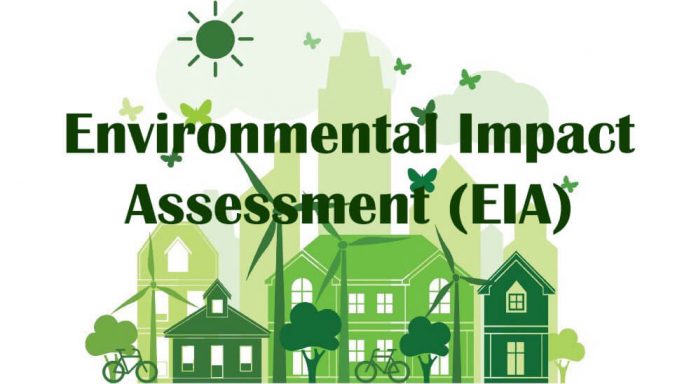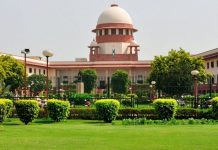This article is written by Nidhi Bajaj, a student of Guru Nanak Dev University, Punjab. This article seeks to analyse the EIA (Environmental Impact Assessment) Draft Notification, 2020 through highlighting its salient features and identifying its various loopholes.
Table of Contents
Introduction
In March 2020, the Ministry of Environment, Forest and Climate Change (MoEFCC) proposed a Draft EIA Notification to replace the existing notification of 2006. The Draft was widely criticized by environmentalists and activists for making huge dilutions in environmental safeguards by allowing several categories of projects to bypass public consultation, introducing ex-post facto environmental clearance, and basically undercutting the climate goals. In this article, the author will be discussing the salient features of the EIA Draft Notification, 2020 and its pitfalls in light of various judicial pronouncements.
EIA : meaning and significance
In simple terms, EIA i.e. Environmental Impact Assessment is the systematic process of identifying the likely environmental impacts of a current or proposed action or project.
The UN Environment Programme (UNEP) defines an EIA as “an examination, analysis, and assessment of planned activities with a view to ensuring environmentally sound and sustainable development.”
EIA is a tool to identify and evaluate the environmental, social, economic, and health-related impacts of a project prior to decision making.
Significance of EIA is as follows:
- By identifying, predicting, and evaluating the environmental impact of the development projects, EIA promotes environmentally conscious decision-making by suggesting mitigation measures conducive to the goal of sustainable development.
- EIA ensures that the project details are disclosed to the public and that everything happens in accordance with the legal safeguards.
- EIA upholds the effective application of the precautionary principle.
- Environmental Clearance (EC) is one of the most important features of an EIA framework.
EIA in India
When EIA was first introduced in India in 1978, it only dealt with the river valley projects but later on, its scope was expanded to include various other developmental projects. The first EIA Notification, namely the EIA Notification 1994 was issued on 27 January 1994 and subsequently, the EIA Notification 2006 was passed to overcome the shortcomings in the previous notification.
The EIA Notification 2006 determines the current environmental regulatory framework in India. It provides for mandatory environmental clearance for a variety of projects including mining, river valley projects, thermal power plants, infrastructure such as road, highway, ports, harbours, and airports, and industries, etc. In this process, an Expert Appraisal Committee (EAC) conducts an assessment for clearance and prepares a preliminary report. Such a report is published followed by a public consultation where the issues and concerns related to the project are raised by the affected parties. After considering all matters, EAC makes a formal recommendation to the regulatory authority, which then takes the final decision as to whether the project can be executed in the proposed form or needs to be modified or given up on. It is noteworthy that the 2006 notification has been amended more than 50 times.
In March 2020, the Central Government in the exercise of the power conferred upon it by the Environment (Protection) Act 1986, issued an EIA Draft Notification 2020 to replace the 2006 notification and to bring about transparency and expediency in the EIA process through the implementation of the online system, further delegations, rationalization, standardization of the process, etc.
EIA Draft Notification, 2020 : salient features
Comprehensive definition clause
The EIA Draft notification 2020 has introduced a comprehensive list of definitions, defining the major terms of the process, an aspect that was missing in the earlier notifications. Some of the important terms that have been defined include –
- Accredited Environmental Impact Assessment Consultant Organisation;
- Appraisal;
- Capital Dredging;
- Certificate of Green Building;
- Corporate Environment Responsibility;
- Eco-sensitive areas;
- Eco-sensitive zones;
- Environmental Impact Assessment Report;
- Environment Management Plan;
- Public consultation.
Technical Expert Committee
Rule 9 of the EIA Draft notification 2020 provides for the constitution of a technical expert committee under Section 3(3) of the Environment (Protection) Act, 1986 by the central government for categorization or re-categorization of projects on scientific principles including streamlining of procedures, etc. The Committee can have a maximum of 10 members and shall have a tenure of 5 years.
6 Stage prior environmental clearance process
The 2006 notification provided for a four-stage Environment Clearance(EC) process for new projects-
- Screening;
- Scoping;
- Public Consultation;
- Appraisal.
Whereas Rule 10 of the 2020 draft provides for a 6 stage Prior EC Process or Prior Environment Permission (EP) process for category A or category B1 projects–
- Scoping;
- Preparation of Draft EIA Report;
- Public Consultation;
- Preparation of Final EIA;
- Appraisal;
- Grant or Rejection of Prior Environment Clearance.
The change, however, is limited to the nomenclature as these steps do exist in the current framework without their explicit mention thereof as a separate stage. But, one thing worth observing is that in the new draft the stage of screening has been deleted.
Amendment in prior-EC or prior-EP
Rule 18 of the EIA Draft Notification, 2020 contains a provision for amendment in prior EC or prior EP through the filing of an online application to the concerned regulatory authority. However, this shall not apply to cases where there is a shift in the project site location after the conduct of public consultation or grant of prior-EC. Such a shift will be deemed to be a new proposal and will be appraised de-novo in accordance with the prescribed procedure unless the Appraisal Committee is satisfied that the shift is so minor as to have no change in the EIA Report.
Due recognition to online mode
The EIA Draft Notification 2020 has rightfully embraced the shift to an online mechanism as it provides for online filing of applications at various stages and for issuance of prior-EP through an online system. For instance, Rule 12(3) of the draft provides for the issuance of standard terms of reference (ToR) to certain projects through online mode.
Grant or rejection of prior environment clearance
Rule 17 of the Notification provides that the regulatory authority has to convey its final decision to the project proponent with respect to grant or rejection of environmental clearance or environmental permission, as the case may be, within ninety days of the submission of the final application and supporting documents. The 2006 notification provided for a time period of 105 days from the receipt of the final EIA Report for grant or rejection of prior EC. This is indeed a praiseworthy effort that will expedite the EC or EP grant or rejection procedure.
Appeal against the prior EC or Prior EP to National Green Tribunal
The EIA Draft Notification, in its Rule 25 provides for an appeal against the prior-EC or prior-EP granted by the Regulatory Authority to the National Green Tribunal. Such appeal has to be preferred within thirty days of the decision of the regulatory authority.
What went wrong
The Draft EIA Notification 2020 faced countrywide opposition due to the following reasons:
Limiting public consultation
Principle 10 of the Rio Declaration on Environment and Development states, “Environmental issues are best handled with the participation of all concerned citizens, at the relevant level”. Public consultation is a very crucial stage in environmental impact assessment. The EIA Draft Notification 2020 provides for a notice period of 20 days to the public for furnishing their responses and comments regarding the proposed project as opposed to the current time period of 30 days provided under the 2006 notification. The government has attributed this shortening of the period to the growth of the internet and mobile telephony. It has been argued by various environmental organisations and activists that even the 30-day period was inadequate due to inaccessibility of information and further delay in its transmission to stakeholders residing in remote areas. Neither people nor the environment can be expected to bear the cost of expediting industrialization and development. Hence, adequate time should be provided to the public for making a rational choice as they are the ones who will be most affected by the concerned project. If reducing time is a major concern, the government should deliberate on reducing the time taken in issuing of approvals, advertisements, etc.
Another problematic provision of the draft is the blanket exemption from public consultation provided to certain categories of projects including:
- Modernization of irrigation projects;
- All linear projects under item 31 and 38, in Border Areas;
- All the off-shore projects located beyond the 12 Nautical Miles;
- All Category ‘B2’ projects and activities;
- All projects concerning National defence and security or involving other strategic considerations which are to be determined by the central government. Also, according to Rule 5(7), no information regarding such projects shall be placed in the public domain.
The notification provides no criteria for designating a project as strategic. Hence, what is strategic is left to the sole discretion of the central government. Such discretionary power given to the government is arbitrary and wholly misplaced as the very moment a project is designated as ‘strategic’, no information regarding it shall reach the major stakeholder i.e. public and that is a direct violation of the concept of environmental democracy.
The shift from half yearly mandatory compliance report to yearly compliance report
After a project gets approved, the project proponents are required to submit compliance reports for ascertaining whether they are complying with the conditions of prior-EC or prior EP and to ensure that no environmental damage is caused by such projects in violation of the terms of the EC.
Rule 20 (4) of the draft EIA Notification, 2020 states that “The yearly compliance report shall be submitted, each year, from the date of grant of prior-EC, till the project life, to the Regulatory Authority concerned.”
It is pertinent to mention that the 2006 notification provided for submission of bi-annual compliance reports. Allowing longer periods for filing compliance reports virtually amounts to providing a safety net to the defaulting proponents who will get sufficient time to cover up the damage caused by them.
Ex-post facto EC
EIA is a mechanism to evaluate a project for its environmental consequences prior to its beginning. But the 2020 Draft Notification provides for ex-post-facto environment clearance for those projects which have already begun working, and no environment clearances were given or sought for the same. Such a proposal is a gross violation of the polluters pay principle and turns it into the ‘Pay and Pollute’ principle. Environmental lawyers are of the view that this will “encourage industries to commence operations without bothering clearance and eventually get regularized by paying the penalty amount” and likely “open a floodgate of violations…”.
The Hon’ble Supreme Court of India has also held that environmental law cannot countenance the notion of an ex post facto clearance and that such a measure would be contrary to both the precautionary principle as well as the need for sustainable development. Hence, such ex-post-facto clearance is an arbitrary measure that has the potential to weaken the whole EIA regime to a substantial extent.
Relevant case laws
Alembic Pharmaceuticals Ltd v. Rohit Prajapati (2020)
In this case, the Hon’ble Supreme Court of India struck down the concept of retrospective EC or ex-post-facto environment clearance as being in derogation of the fundamental principles of environmental jurisprudence. The Court relied on the case of Common Cause v. Union of India (2017), wherein it was held that the concept of retrospective EC is alien to environmental jurisprudence including EIA 1994 and EIA 2006 and that grant of an ex post facto environmental clearance would be detrimental to the environment and could lead to irreparable degradation of the environment.
Association for Environmental Protection v. State of Kerala (2013)
In this case, the Supreme Court has held that commencement of projects without obtaining prior EC is violative of the fundamental Right to Life of the people of the concerned area as guaranteed under Article 21 of the Constitution of India.
Lafarge Umiam Mining Private Limited v. Union of India (2011)
The Supreme Court has highlighted the importance of public consultation in the EIA process in this case. It was held that the public consultation or public hearing is a mandatory requirement of the EC and provides an effective forum to the persons aggrieved by any aspect of any project to register to seek redressal of their grievances.
Samarth Trust And Another v. Union Of India And Others (2010)
In this case, the Delhi High Court has comprehensively dealt with the nature, scope, and methodology of a public hearing. The Court observed that “A public hearing is a form of participatory justice giving a voice to the voiceless and a place and occasion to them to express their views with regard to a project.” Highlighting the importance of public hearing, the Court also observed that:
- A public hearing gives an opportunity to the people to raise issues regarding the social and health impact of a proposed project.
- A public hearing brings transparency to a proposed project. It gives information to the community about the project who are given an opportunity to express their views on the same.
- A public hearing is a form of social audit that provides social acceptability to a project, wherever necessary.
The Court held that a public hearing must be conducted in a formal or a semi-formal manner also gave the following guidelines:
- Adequate notice must be given to all the concerned parties which includes fulfilling three basic components: adequate time for preparation, adequate publicity for the benefit of all concerned, and availability of all relevant information.
- A panel must be available to conduct the public hearing in a disciplined manner.
- A faithful record of the views expressed must be maintained including video conferencing and recording of minutes.
- The public hearing must be fair to all participants.
- The public hearing has to be structured.
Sandeep Mittal v. Ministry of Environment, Forests & Climate Change & Ors. (2020)
In this case, the National Green Tribunal, while recognising the need for an effective monitoring mechanism, observed that compliance of conditions of Environmental Clearance has to be monitored on a quarterly basis, as far as possible and in no case less than twice a year. The Tribunal stressed on speedy monitoring and speedy action, wherever necessary in light of the principle of Sustainable Development and the Precautionary principle, which have been held to be a part of the Right to Life.
Conclusion
The EIA Draft Notification 2020 in its bid to improve the ease of doing business proposes to neglect the important environmental goals. It is lamentable that the government chose to incorporate concepts such as ex post facto clearance and limited public consultation in the draft EIA notification which are clearly against the Supreme Court guidelines. However, the good thing is that people are conscious of their rights and duties towards the environment and are coming together against the arbitrary aspects of notification. Lastly, it is worth mentioning that departure from the fundamental principles of environmental jurisprudence including the polluter pays principle, the principle of sustainable development, the precautionary principle cannot be permitted in any circumstance and the same time, while balancing economic growth with environmental protection, the importance of Article 48 (Duty of state to protect and improve the environment) and Article 21 (Right to the Environment) of the Constitution of India cannot be ignored.
References
- https://www.lexology.com/library/detail.aspx?g=2761b4ea-af66-4c10-9056-61cd9d66036f
- https://idsa.in/issuebrief/indias-environment-impact-assessment-ojamir-080221
- https://brill.com/view/journals/cjel/5/1/article-p11_2.xml?language=en
- https://www.cseindia.org/understanding-eia-383
- https://indiankanoon.org/doc/135723482/
- https://www.google.com/url?sa=t&source=web&rct=j&url=https://parivesh.nic.in/writereaddata/ENV/EnvironmentalClearance-General/18.pdf&ved=2ahUKEwiNtMvj8fHzAhUKzTgGHSArCU4QFnoECDoQAQ&usg=AOvVaw057XzhFIkexDl3AepFBszG
- https://www.google.com/url?sa=t&source=web&rct=j&url=http://environmentclearance.nic.in/writereaddata/Draft_EIA_2020.pdf&ved=2ahUKEwipu6To_urzAhWWzTgGHSXjDXwQFnoECAQQAQ&usg=AOvVaw0X4aItQ0wqo2CnkYCjp4X9
- https://blog.ipleaders.in/critical-analysis-draft-eia-notification-2020/?amp=1
Students of Lawsikho courses regularly produce writing assignments and work on practical exercises as a part of their coursework and develop themselves in real-life practical skills.
LawSikho has created a telegram group for exchanging legal knowledge, referrals, and various opportunities. You can click on this link and join:
https://t.me/joinchat/L9vr7LmS9pJjYTQ9
Follow us on Instagram and subscribe to our YouTube channel for more amazing legal content.
 Serato DJ Crack 2025Serato DJ PRO Crack
Serato DJ Crack 2025Serato DJ PRO Crack









 Allow notifications
Allow notifications



